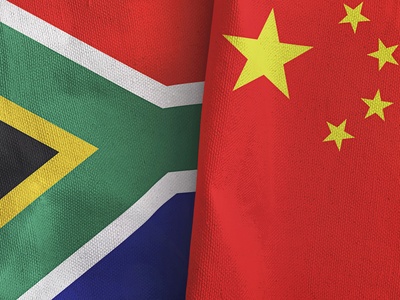
Tanya Weaver Fri 21 Mar 2025
Collected at: https://eandt.theiet.org/2025/03/21/researchers-south-africa-and-china-transmit-quantum-encrypted-images-nearly-13000km
Researchers have broken a distance record in quantum communication by transmitting ultra-secure quantum-encrypted images nearly 13,000km from China to South Africa.
Researchers from Stellenbosch University in South Africa and the University of Science and Technology, Hefei, in China have successfully established the world’s longest intercontinental ultra-secure quantum satellite link, spanning 12,900km.
Using the Chinese quantum microsatellite Jinan-1, launched into low-Earth orbit, this milestone marks the first-ever quantum satellite communication link established in the Southern Hemisphere.
The microsatellite was able to send pulses of laser light, put into special quantum states, from a rooftop in Beijing to another at Stellenbosch University near Cape Town.
The pulses formed a quantum key that was used to encrypt two images – one of China’s Great Wall and one showing part of Stellenbosch’s campus.
In the demonstration, a kind of encryption known as quantum key distribution (QKD) enabled the secure encryption of images transmitted between ground stations in China and South Africa via one-time pad encryption, which is considered unbreakable.
QKD employs single photons to encode and transmit secure keys. As single photons cannot be intercepted, copied or measured without altering their quantum states, this technology marks an important step towards sending ultra-secure messages between any two locations, however distant.
During the demonstration, Stellenbosch’s ideal environmental conditions – clear skies and low humidity – allowed the local ground station to achieve an exceptional key generation rate of 1.07 million secure bits during a single satellite pass.
The Jinan-1 microsatellite is 10 times lighter, 45 times cheaper and much more efficient than its predecessor Micius, which launched in 2016, according to Jian-Wei Pan, a quantum physicist at the University of Science and Technology. He led the work in China.
His team also shrank the ground-station receiver from 13,000kg to a portable 100kg.
Pan said: “We want to improve the technology from proof-of-principle to really practical and useful.”
The South African research team at Stellenbosch University’s Department of Physics was led by Dr Yaseera Ismail, the lead experimentalist responsible for successfully establishing the quantum satellite link.
Dr Ismail emphasised the importance of collaboration: “International and national collaborations are essential to drive cutting-edge research and push scientific boundaries. Implementing the first quantum satellite link in the Southern Hemisphere is an outstanding achievement for South Africa, demonstrating the significant potential to develop a thriving quantum ecosystem.”
The paper – titled ‘Microsatellite-based real-time quantum key distribution’ – has been published in the journal Nature.

Leave a Reply